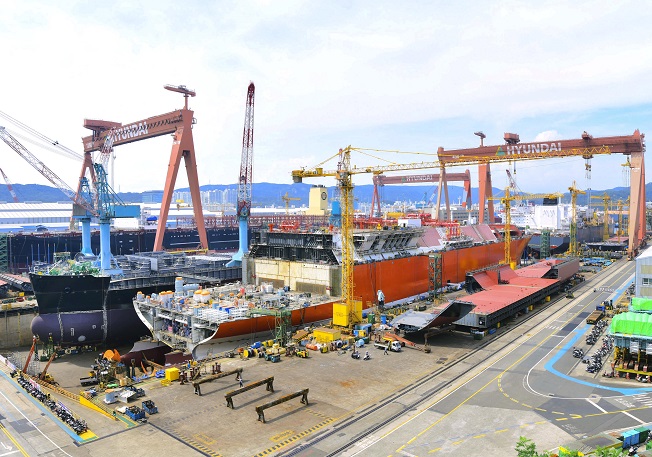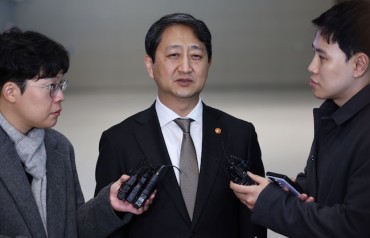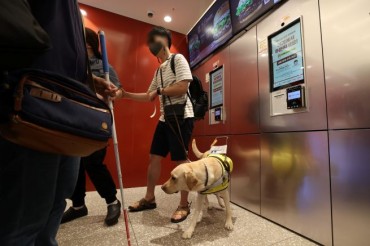
This file photo provided by Korea Shipbuilding & Offshore Engineering Co. shows a shipyard of Hyundai Heavy Industries Co. in Ulsan, 414 kilometers southeast of Seoul.
SEOUL, June 22 (Korea Bizwire) — South Korea’s shipbuilders, led by Hyundai Heavy Industries Co., suffered from a sharp drop in new orders in the first five months of the year, falling sharply short of their annual order targets due to the coronavirus outbreak and a drop in oil prices, the companies’ data showed Monday.
Korea Shipbuilding & Offshore Engineering Co. said its three shipbuilding subsidiaries have bagged a combined US$1.82 worth of orders to build a total of 29 ships in the January-May period, meeting a meager 10.4 percent of their annual order targets of $17.5 billion.
Korea Shipbuilding & Offshore Engineering is the holding company of Hyundai Heavy Industries, Hyundai Mipo Dockyard Co. and Hyundai Samho Heavy Industries Co.
Daewoo Shipbuilding & Marine Engineering Co. has achieved 20 percent of its annual order target of $7.21 billion during the five-month period with just $1.43 billion worth of orders to build six ships.
Samsung Heavy Industries Co. achieved a mere 6 percent of its annual order target of $8.4 billion by clinching $490 million in orders, or five ships.
Their dismal new orders were due mainly to the coronavirus pandemic that hurt global trade and led to a sharp drop in oil prices.
According to data provided by global market researcher Clarkson Research Service, global shipbuilding orders came to 4.66 million compensated gross tons (CGTs) in the January-May period, down 61.2 percent from a year ago.
Global shipbuilding orders are expected to decline by 23 percent to 21 million CGTs this year from a year earlier, the lowest level since 2016, when the comparable figure was 13.79 million CGTs.
“Oil prices and new orders were the lowest level since 2016, but investors have hoped for more orders of LNG carriers (in the second half),” Lee Dong-heon, an analyst at Daishin Securities Co., said in his report.
Analysts said a rise in oil prices may stoke demand for commercial vessels.
“If prices of West Texas Intermediate (WTI) crude move up over $40 a barrel, the production of shale gas and oil in the U.S. will rise, which will generate orders of commercial vessels,” said Bae Se-jin, an analyst at Hyundai Motor Securities Co.
(Yonhap)






